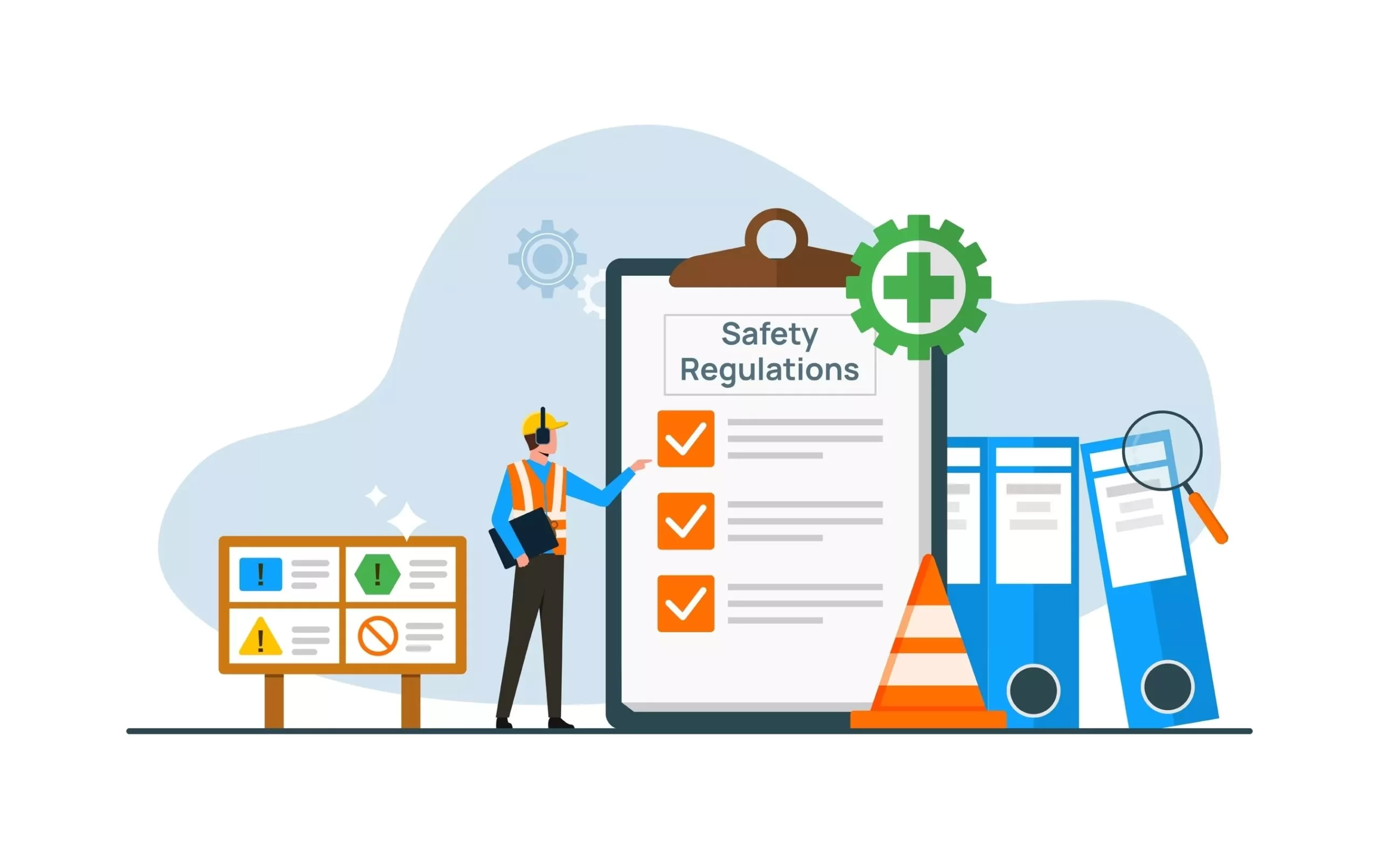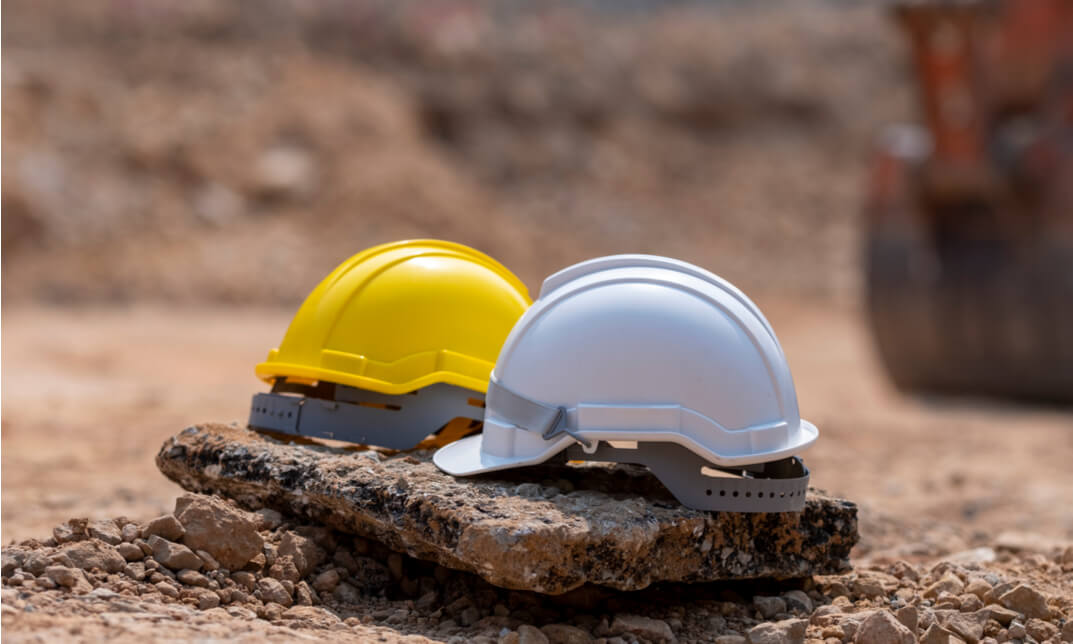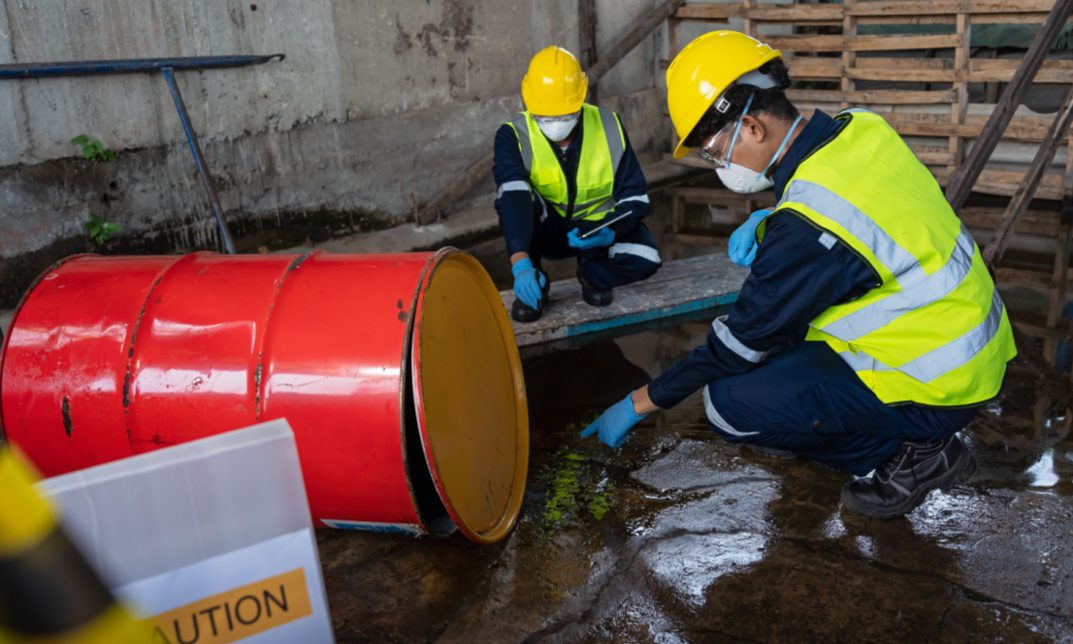No products in the basket.
Introduction:
It is critical for any organization to provide an ideal construction environment for maximum production. It not only promotes productivity, but it also assures the health and safety of your staff while they are on the job.
In this blog article, we will cover how to establish the best possible construction working environment to ensure optimum productivity as well as the health and safety of your crew. Creating a safe and productive atmosphere on the construction site is critical to the job’s success.
The health and safety of construction workers are critical, and appropriate procedures must be implemented to guarantee that the highest levels of health and safety are reached.
Furthermore, actions can be taken to establish an ideal building environment for maximum efficiency. In this blog article, we will look at how to build an ideal construction environment for maximum productivity, as well as the need to preserve health and safety in the workplace.
On construction sites, creating a safe and healthy working environment is critical to the success of any project. Construction health and safety policies may have a significant influence on productivity, efficiency, and, ultimately, the overall success of a project.
In this blog article, we will discuss the significance of health and safety in the construction industry and offer advice on how to establish the best construction environment for optimum productivity.
You can guarantee that your construction project works smoothly and effectively by recognizing the importance of health and safety and applying the appropriate steps.
Importance of Optimal Construction Environment:
A good construction environment is essential for a number of reasons. It can enhance worker safety and well-being, boost efficiency and production, and lead to higher-quality construction.
A safe and healthy workplace can minimise the likelihood of accidents and injuries, resulting in fewer workers’ compensation claims, lower absenteeism, and higher employee morale.
A productive and efficient workplace may assist to decrease costs and fulfil deadlines, whilst a well-controlled environment can increase construction quality and avoid the need for costly repairs or corrections.
Furthermore, by decreasing waste and minimising the use of natural resources, an optimised building environment may decrease environmental impact and promote sustainability.
Proper lighting, ventilation, and temperature management may all contribute to an optimum building environment. These can serve to enhance employees’ general comfort and safety, as well as aid to prevent problems like heat stress and weariness.
An ideal construction environment may also include steps to lower noise levels and exposure to dangerous chemicals. This can improve workers’ general health and well-being, as well as aid to prevent long-term health concerns.
An ideal construction environment also includes effective communication and organization. Clear communication among workers, supervisors, and managers may assist in enhancing coordination and eliminating confusion, leading to increased efficiency and production.
Proper organization and planning may also help to avoid waste and delays, which can help to control costs and enhance overall building quality.
Overall, an ideal construction environment may provide several benefits to both employees and projects. It has the potential to improve safety, health, and comfort, as well as boost efficiency and production and lead to higher-quality buildings.
Furthermore, an ideal building environment may aid in reducing environmental effects and improving sustainability.
Accident History for Safety Issue:
Accidents and safety problems have a long history on construction sites in the United Kingdom. Construction is one of the most dangerous businesses in the UK, according to the Health and Safety Executive (HSE), with a greater proportion of fatal injuries than other sectors.
The HSE reported 30 employees killed in construction-related accidents in 2020-2021. Falls from great heights, being struck by a moving vehicle, and being struck by falling materials are all common causes of accidents on construction sites.
Other safety concerns on UK building sites include exposure to toxic materials such as asbestos, as well as noise and vibration. Concerns have also been raised concerning construction employees’ mental health and well-being, as the business may be stressful and demanding.
To address these safety concerns, the HSE undertakes inspections and enforcement actions on building sites throughout the United Kingdom. The HSE also provides information and tools to assist construction businesses in improving site safety.
The UK government has also implemented laws such as the Construction (Design and Management) Regulations 2015, which require construction firms to have a strategy in place to manage health and safety concerns on their sites.
Furthermore, the UK construction industry has a number of trade organizations, including the Construction Industry Training Board (CITB), which provides construction workers with training and qualifications, and the Institution of Occupational Safety and Health (IOSH), which promotes and educates workers about safety and health.
While the UK construction sector has made strides in increasing safety in recent years, accidents and safety concerns continue to be a major concern. Construction firms and the construction industry as a whole must continue to emphasize safety and adopt effective measures to avoid accidents and increase worker well-being.
Law for Construction Environment Safety:
The Health and Safety at Work Act 1974 is the primary piece of legislation controlling construction site safety in the United Kingdom (HSW Act). Employers are required by law to create a safe and healthy work environment for their workers, as well as to take reasonable precautions to protect the health and safety of anyone who may be impacted by their employment.
Another key rule that relates to building projects in the UK is the Construction (Design and Management) Regulations 2015 (CDM Regulations). These requirements require construction businesses to have a strategy in place for managing health and safety hazards on their sites, as well as to select a competent person to manage health and safety on the project.
The Management of Health and Safety at Work Regulations 1999 (MHSWR) apply to construction sites in the United Kingdom as well. This regulation mandates companies to undertake risk assessments and execute actions to control threats to their employees’ health and safety.
The Control of Asbestos Regulations 2012 is a piece of legislation that governs the use, handling, and disposal of asbestos. This legislation compels companies to detect and manage asbestos in the workplace, as well as to give employees who may be exposed to asbestos information and training.
In addition to these laws, numerous industry-specific restrictions and norms apply to building sites in the United Kingdom. These include guidelines for using personal protective equipment (PPE), handling hazardous products, and operating machinery and equipment.
Construction Workers are More Productive When They Feel Comfortable:
When it comes to health and safety in the construction industry, feeling at ease is critical. Construction employees must not only feel safe on the job, but they must also be comfortable in order to be productive. A distracting work environment can lead to diminished motivation, making it harder for construction employees to remain productive.
One of the finest ways to make a construction worker feel at ease is to provide a setting with plenty of natural light and airflow.
This will help alleviate any sense of confinement and put workers at comfortable in the built environment. Furthermore, giving construction workers enough room to walk around might help them stay comfortable and engaged. Breaks should be granted as needed during the day to allow personnel to stretch their legs, eat a snack, or get some fresh air.
A well-organized and well-kept construction site is also essential for establishing a comfortable and productive atmosphere. Workers will be able to get started on projects and proceed through them more effectively if they have clear paths and easy-to-find resources. This will assist in avoiding any needless delays or interruptions to development.
Creating an ideal construction environment is critical for increasing worker productivity while also ensuring everyone feels secure and comfortable on the job. Employers may create an ideal atmosphere for construction employees to perform their hardest by providing lots of natural light and air, providing workers with breaks and refreshments, and keeping an orderly and well-maintained construction site.
The Construction Environment Should be Well-lit:
To protect the safety and health of all workers, the building site should be well-lit. It is also beneficial to productivity since it may aid in the creation of a welcoming and pleasant environment. Poor illumination can cause workplace accidents, weariness, and even long-term eye strain.
Each work done in the built environment should have appropriate lighting. According to the level 1 health and safety in a construction site, appropriate illumination must be supplied at all times. All light sources must be securely fastened and kept away from damp or dangerous objects. The light intensity should be adequate for the activity at hand and uniformly diffused around the workstation.
Furthermore, whenever feasible, natural light should be offered.
You can assist in protecting the health and safety of all workers as well as ensuring greater productivity by providing a well-lit construction site. Your construction team will be able to operate more efficiently and effectively in an engaging and pleasant workplace.
You can assist in protecting the health and safety of all workers as well as greater productivity by providing a well-lit construction site. Your construction team will be able to operate more efficiently and effectively in an engaging and pleasant workplace.
There should be Plenty of Space for Construction Workers to Move Around:
Building employees must have enough room to work and move around the construction site. A small or crowded place might be dangerous and lead to an accident. In order to have a safe and orderly work environment, construction workers must have adequate space to store their tools, supplies, and equipment.
Providing enough room for construction employees to work efficiently not only encourages improved productivity but also assures construction health and safety. Construction employees must have access to first aid kits and basic medical supplies in case of an emergency on-site to provide a safe working environment.
Adequate illumination should also be supplied so that any possible risks in the area may be immediately identified. Employers may also consider deploying on-site security systems to safeguard construction employees from potential dangers. Employers should also emphasize training construction employees on health and safety rules and correct safety measures, such as wearing adequate protective gear and adhering to suitable working standards.
Finally, employers should be on the lookout for changes in weather conditions that may pose hazards on-site and respond accordingly. Employers may safeguard the health and safety of construction employees on-site while also increasing productivity by following all of these precautions.
The Construction Site Should be Well-Organized:

Keeping everyone on site healthy and safe requires creating a safe and regulated construction environment. To limit the possibility of accidents or injuries, tools, materials, and equipment must be properly labelled, kept, and organized.
All personnel should be well taught the appropriate use of equipment and safety protocols. Furthermore, adequate distance should be provided between construction zones to reduce possible dangers. Keeping the construction site clean and orderly will not only make the task simpler but will also protect everyone’s health and safety. All hazardous chemicals, for example, must be properly recognized, handled, and stored securely.
Furthermore, all electrical outlets should be covered, and all exposed wires should be insulated. All employees should constantly wear personal protective equipment (PPE) such as hard helmets, steel toe boots, and dust masks to protect themselves from workplace accidents or diseases.
If a worker sustains an accident or sickness as a result of working circumstances, they must be notified immediately so that corrective actions can be implemented as soon as possible. Adequate first aid supplies should always be provided so that small injuries may be handled without leaving the spot.
Regular inspections should be performed to ensure that all laws and regulations pertaining to construction health and safety are being followed appropriately. This can help to guarantee that all personnel are safe while on the job.
Construction Workers Should Have Access to Breaks and Snacks:
Construction workers must have access to frequent breaks and refreshments throughout the day in order to be productive. This allows them to rest and re-energize, which will help them stay productive and motivated in the long run.
Water, other liquids, and nutritious snacks can help keep construction workers hydrated and motivated throughout the day. Having food on hand also allows them to take a quick break when required. This contributes to construction employees working in a safe and comfortable workplace.
Construction workers will be more inclined to work at their peak productivity if breaks and refreshments are provided. Breaks should be no more than 15 minutes long and taken every two hours or so. Workers should be encouraged to move around and stretch during these intervals, or to acquire food or other beverage from a nearby location. This will keep workers motivated and aware throughout their shifts.
Furthermore, giving cool refreshments such as soda, juice, or iced tea will assist workers to stay hydrated during hot weather. Employers could also consider providing complimentary fruits and nuts over lunch to keep employees hydrated throughout the day.
Employers might also give incentives such as gift cards or bonus days off to workers who demonstrate exceptional performance or devotion on the job to increase morale.
Workplace Safety in The UK:

Workplace safety is a key problem in the United Kingdom, and different rules and regulations have been enacted to guarantee that companies offer a safe and healthy workplace for their employees. The Health and Safety at Work Act 1974 (HSW Act) is the primary piece of legislation governing workplace safety in the United Kingdom.
It imposes a legal obligation on businesses to maintain a safe and healthy working environment for their workers, as well as to take reasonable precautions to safeguard the health and safety of anyone who may be impacted by their employment.
The Health and Safety Executive (HSE) is the government body in the United Kingdom in charge of enforcing workplace safety legislation. The HSE performs inspections and enforcement actions to ensure that companies are in compliance with the law, and it also provides information and tools to assist employers in improving workplace safety.
In addition to these laws, additional industry-specific rules and standards apply to various industries in the UK, such as building, manufacturing, and healthcare. Employers must follow these rules and regulations, as well as take proper precautions to safeguard the health and safety of their workers and anyone else who may be harmed by their work.
Overall, the United Kingdom has a strong legislative framework in place to maintain workplace safety, and companies are expected to take adequate precautions to safeguard their employees’ health and safety. Accidents and mishaps do occur in the workplace, though.
To guarantee worker safety and health, firms must remain current with laws and regulations, conduct frequent safety audits, and give training and instruction to their personnel.
Summary:
Creating the ideal building environment is critical to maximizing efficiency. A well-lit building environment with plenty of space for employees to move around, as well as access to breaks and food, are all important factors in making a successful construction site.
It is also critical to ensure that health and safety regulations are followed in order to maintain a safe working environment. Level 1 health and safety criteria, including wearing the proper personal protective equipment (PPE) and ensuring no hazardous items are present, must be met. It is feasible to establish an ideal construction environment that allows employees to be productive and safe by following these rules.
Effective communication between management and employees will assist guarantee that everyone understands what has to be done to keep operations operating smoothly. PPE should always be required on-site to ensure level 1 health and safety. Furthermore, any possible risks should be recognised and properly delineated with barriers and signage.
In addition, regular inspections should be performed to detect any changes in the built environment or possible dangers. It is critical to remember that the purpose of building an ideal construction environment is to increase production while simultaneously providing a safe working environment for employees.
Taking the necessary precautions to reduce hazards while allowing staff to execute their responsibilities quickly will result in project success.
Did we miss anything? We want to make this article a comprehensive list of problems and solutions with traffic sources. If you know of something we missed, let us know with a comment below; we appreciate the input.
FAQs
What are The Safety Measures to be Considered in The Construction Site?
To guarantee the safety and well-being of employees and anyone who may be impacted by building activity, different safety precautions should be considered on a construction site. Among the major measures are:
- Risk assessments: Conduct frequent risk assessments to detect possible dangers on the building site and apply control measures. Fall protection refers to the use of guardrails, safety nets, and personal fall arrest systems to protect employees against falls from great heights.
- Personal protection equipment (PPE): Protect employees from possible risks by providing suitable PPE such as hard helmets, safety goggles, and steel-toed boots.
- Emergency response: Creating and carrying out an emergency response plan in the event of a possible crisis such as a fire, an accident, or a medical emergency.
- Scaffolding: Ensuring that scaffolding is correctly installed, maintained, and inspected in order to prevent falls.
- Excavation: Sloping or propping ditches and excavations properly to prevent cave-ins.
- Material handling: Handling materials correctly to avoid injury from falling items or other risks.
It is important to note that these safety measures are not exhaustive, and it is the employer’s, contractor’s, and designer’s responsibility to comply with the laws and regulations, as well as to consider all potential hazards on the construction site, in order to develop and implement appropriate safety measures to protect workers and others who may be affected by the construction work.
What is The Most Likely Environmental Impact of The Construction?
The environmental impact of the building would be determined by the individual project and region. Common consequences include the loss of natural ecosystems, the relocation of species, increased air and water pollution, and increased carbon emissions from heavy machinery and material transportation.
Furthermore, building projects may cause soil erosion and sedimentation in neighbouring water bodies. It’s also worth noting that building projects have the potential to have both beneficial and negative environmental consequences, depending on how they’re carried out and planned.
What Environmental Factors Affect The Construction Industry?
Several environmental issues can have an impact on the building sector, including:
Extreme weather conditions can cause building projects to be delayed and costlier.
Natural resources: Construction projects can be hampered by a lack of natural resources such as water and raw materials.
Land use changes can affect the availability of building sites as well as the cost of construction.
Environmental restrictions and legislation: Government rules and laws can limit the sorts of building projects and materials that can be utilised.
Public perception of the environmental effect of building projects can have an impact on their viability and finances.
How Can We Reduce The Negative Impact of Construction on The Environment?
Several environmental issues can have an impact on the building sector, including:
Extreme weather conditions can cause building projects to be delayed and costlier.
Natural resources: Construction projects can be hampered by a lack of natural resources such as water and raw materials.
Land use changes can affect the availability of building sites as well as the cost of construction.
Environmental restrictions and legislation: Government rules and laws can limit the sorts of building projects and materials that can be utilised.
Public perception of the environmental effect of building projects can have an impact on their viability and finances.
Green construction: A greater emphasis on sustainability and energy efficiency in building design and construction can propel
How can we protect the environment in the construction industry?
- Adhering to environmental regulations and laws: Compliance with government regulations and laws is critical to protecting the environment during construction.
- Developing an Environmental Management System (EMS): An EMS can help to identify and manage the environmental risks associated with a construction project.
- Conducting an environmental impact assessment (EIA): An EIA can help to identify and mitigate the potential environmental impacts of a construction project.
- Implementing sustainable building practices: This can include using materials with a lower environmental impact, incorporating energy-efficient systems, and designing buildings to optimize natural light and ventilation.
- Preserving natural habitats: Careful planning and execution of construction projects to minimize the impact on natural habitats and wildlife populations.





